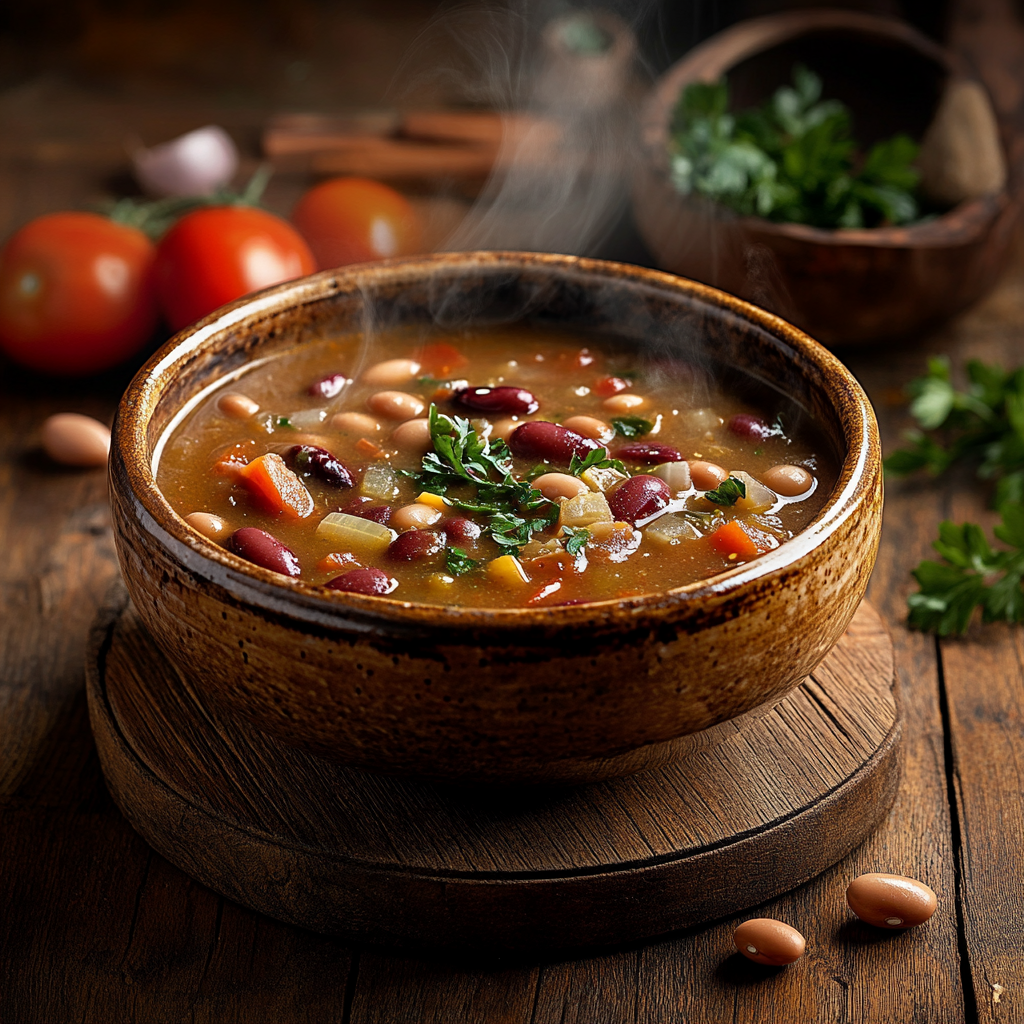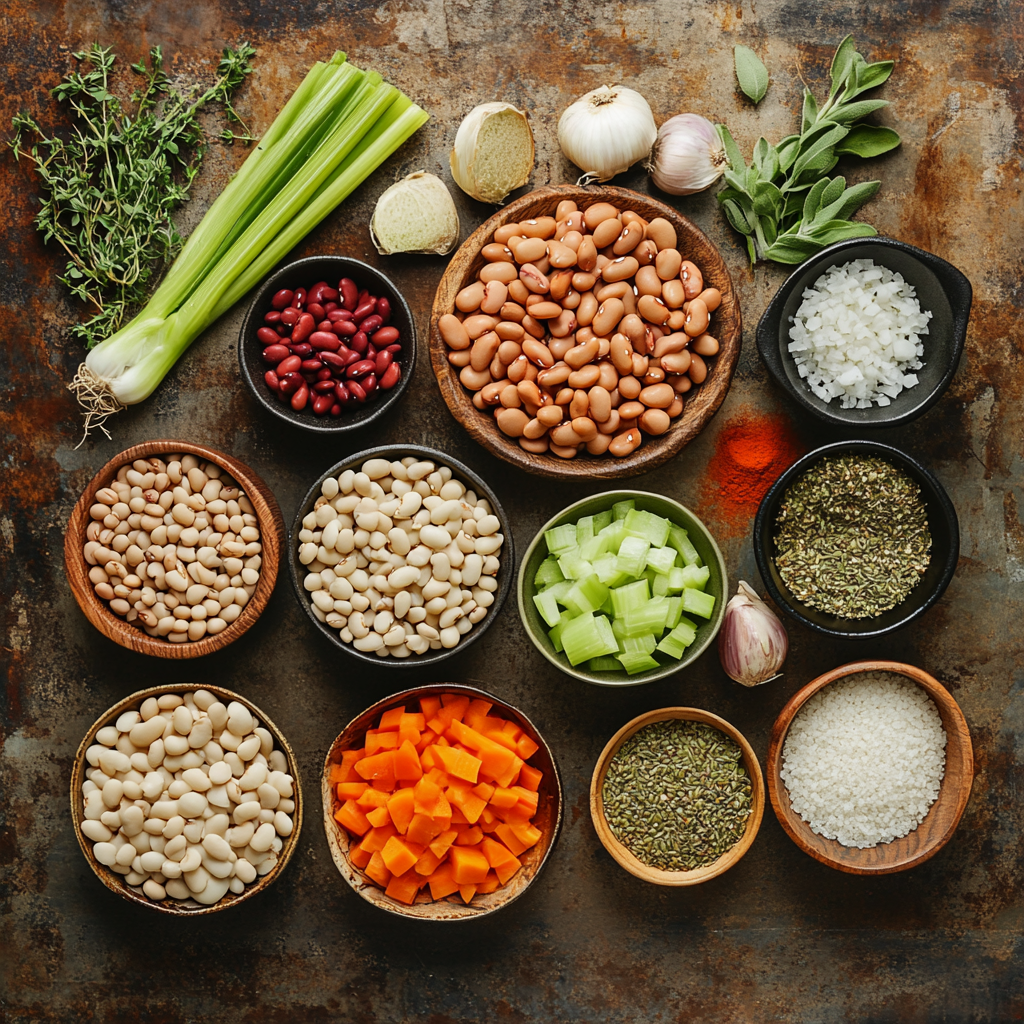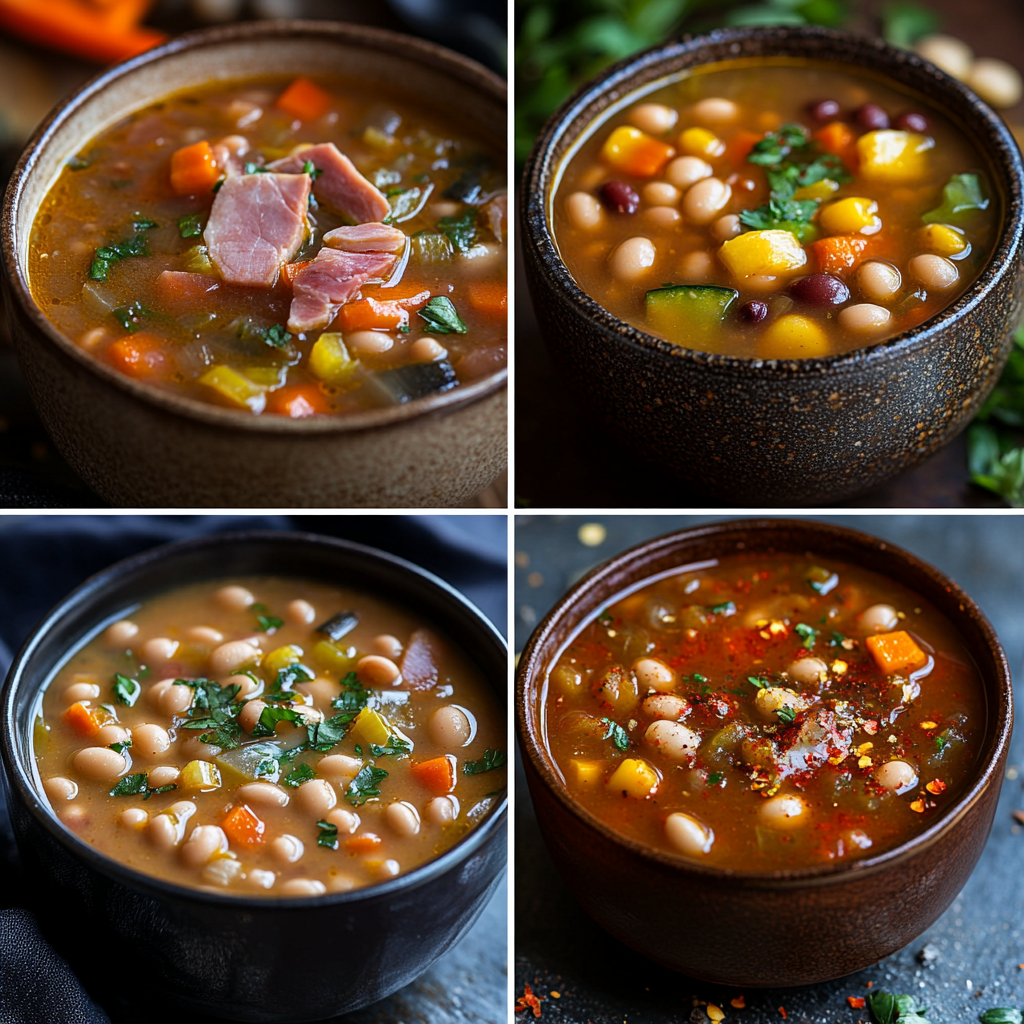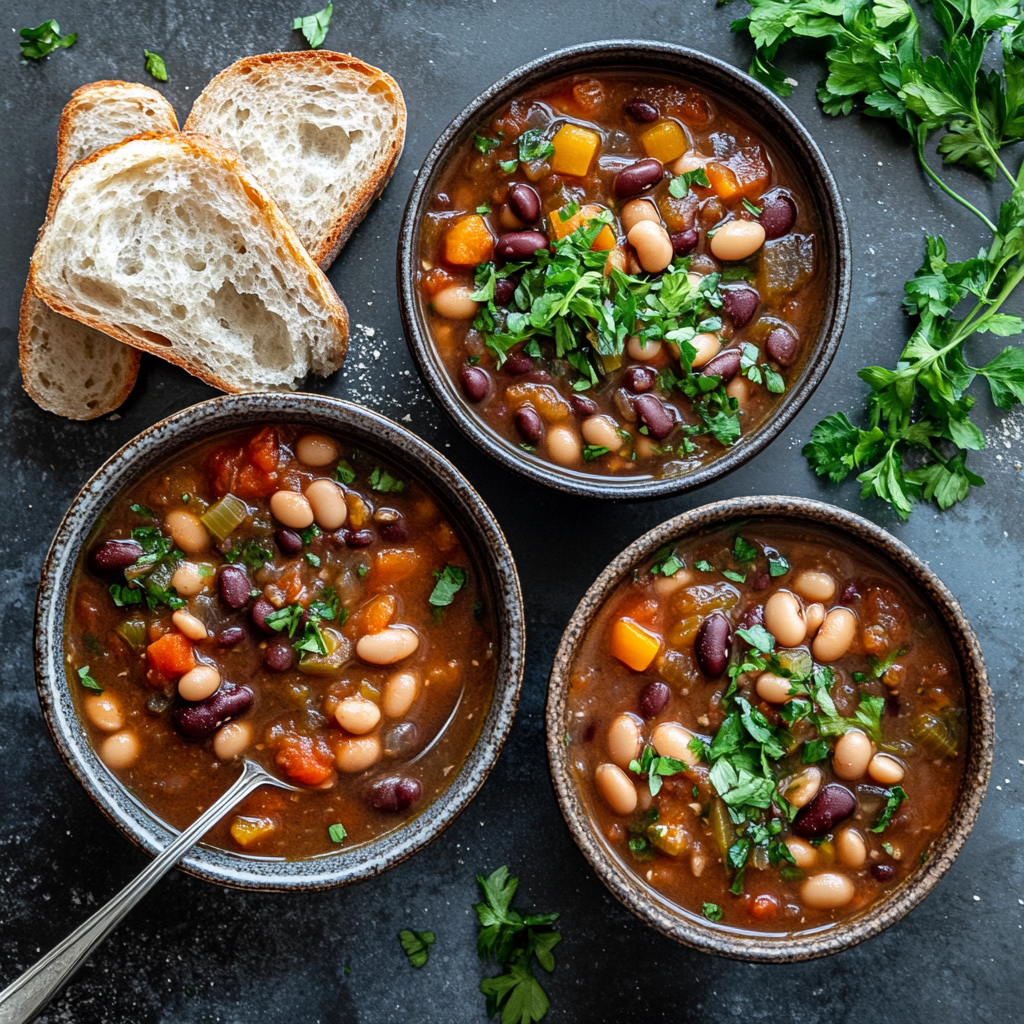Introduction

15 bean soup is a popular and hearty dish known for its rich flavor and nutritional benefits. As the name suggests, it combines 15 different types of beans, offering a variety of textures and tastes. Understanding the nutritional value of this soup can help you incorporate it into a balanced diet. Let’s dive into the health benefits, preparation tips, and various recipes for this comforting meal.
Nutritional Breakdown
15 bean soup is packed with essential nutrients that make it a healthy meal option. A typical serving contains around 250-300 calories, making it a low-calorie yet satisfying choice. The soup is high in protein, with approximately 10-15 grams per serving, which is crucial for muscle repair and growth. Additionally, it is rich in fiber, providing around 15 grams per serving, which aids in digestion and helps maintain blood sugar levels.
For a detailed nutritional analysis, you can refer to the 15 bean soup recipe which highlights the benefits of each ingredient. The soup also includes a significant amount of vitamins and minerals, such as iron, potassium, and vitamin B, which support overall health and well-being. Compared to other soups, 15 bean soup stands out due to its high protein and fiber content, making it an excellent choice for those looking to maintain a healthy weight and support digestive health.
Health Benefits
The health benefits of 15 bean soup are numerous, thanks to its nutrient-dense ingredients:
- High in Protein and Fiber: The combination of beans provides a substantial amount of protein and fiber, which helps keep you full and satisfied. This makes it an ideal meal for weight management and maintaining energy levels.
- Rich in Vitamins and Minerals: 15 bean soup is packed with essential vitamins and minerals like folate, iron, and magnesium. These nutrients support various bodily functions, including blood pressure regulation and bone health.
- Supports Digestive Health: The high fiber content in 15 bean soup promotes digestive health by aiding in regular bowel movements and preventing constipation. Soaking the beans before cooking can enhance their digestibility.
- Heart Health: The low fat content and presence of soluble fiber in 15 bean soup contribute to heart health by helping lower cholesterol levels and reducing the risk of cardiovascular diseases.
For more insights into the benefits of bean soup, explore this vegetarian 15 bean soup resource, which emphasizes the role of beans in a healthy diet.
Ingredients and Their Benefits

The key ingredients in 15 bean soup each contribute to its nutritional value:
- Beans: The star of the dish, beans provide protein, fiber, and various vitamins and minerals. They come in many varieties, such as navy beans, black beans, and kidney beans, each offering unique benefits.
- Vegetables: Ingredients like carrots, celery, and onions add flavor and nutrients. Carrots are rich in beta carotene, which supports eye health, while celery and onions provide antioxidants and anti-inflammatory properties.
- Spices: Herbs and spices like bay leaves, thyme, and garlic enhance the flavor of the soup and offer antioxidant and anti-inflammatory benefits.
Variations and Their Impact on Nutrition

15 bean soup can be customized to suit various dietary preferences:
- Vegetarian and Vegan Options: Omit meat and use vegetable broth to make the soup vegetarian or vegan. This version remains high in protein and fiber, making it a satisfying plant-based meal.
- Adding Meat: For a heartier option, add ham, chicken, or sausage. While this increases the protein content, it may also add fat and calories, so portion control is essential.
- Instant Pot and Slow Cooker Methods: Cooking 15 bean soup in an Instant Pot or slow cooker can enhance the flavors and make the beans more tender. These methods are convenient for busy schedules and yield delicious results.
Preparation Tips
To achieve the best results when making 15 bean soup, follow these tips:
- Soaking Beans: Soak the beans overnight to improve their digestibility and reduce cooking time. This step is crucial for achieving the desired texture and flavor.
- Cooking Techniques: Use a slow cooker or Instant Pot for convenience, or simmer the soup on the stovetop for a traditional approach. Ensure the beans are tender before serving.
Recipe Ideas

Here are some recipe ideas to inspire your next 15 bean soup creation:
- Traditional 15 Bean Soup: Combine 15 different beans, vegetables, and spices for a classic, comforting meal. Simmer on the stovetop until the beans are tender.
- Vegetarian 15 Bean Soup: Use vegetable broth and omit meat for a plant-based version. Add extra vegetables like spinach or kale for added nutrients.
- Instant Pot 15 Bean Soup: Cook the soup in an Instant Pot for a quick and convenient meal. This method ensures tender beans and rich flavors.
FAQs
- Is 15 bean soup good for weight loss?
- Bean soup can be part of a healthy diet due to its high fiber and protein content, which can aid in weight management by keeping you full and satisfied. However, portion control and overall dietary habits are crucial for weight loss.
- Can 15 bean soup help with digestion?
- Yes, the high fiber content in 15 bean soup supports digestive health by promoting regular bowel movements and preventing constipation. Soaking beans before cooking can enhance digestibility.
- Is 15 bean soup suitable for vegetarians and vegans?
- Yes, 15 bean soup can be made vegetarian or vegan by omitting meat and using vegetable broth. It’s a great source of plant-based protein and fits well into a vegetarian or vegan diet.
- How can I thicken 15 bean soup?
- To thicken 15 bean soup, you can puree a portion of the beans and stir them back into the soup, or add a cornstarch slurry during the final minutes of cooking.
- Can I freeze 15 bean soup?
- Yes, 15 bean soup freezes well. Allow it to cool before transferring to a freezer-safe container. It can be stored in the freezer for up to 3 months and reheated as needed.
Potential Drawbacks and Considerations
While 15 bean soup offers numerous health benefits, there are a few considerations to keep in mind:
- Sodium Content: Some 15 bean soup mixes and recipes may be high in sodium, especially if they include a seasoning packet. Opt for low-sodium broth and avoid adding extra salt to manage your sodium intake.
- Digestive Issues: Some individuals may experience gas or bloating after consuming beans. Soaking the beans and discarding the soaking water can help reduce these effects.
- Allergies and Dietary Restrictions: Be aware of any allergies or dietary restrictions when preparing 15 bean soup. Ensure all ingredients are suitable for your dietary needs.
Conclusion
15 bean soup is a nutritious and versatile meal that offers numerous health benefits. Its high protein and fiber content make it an excellent choice for supporting digestive health and weight management. Incorporating this soup into your diet can contribute to a balanced and healthy lifestyle.
References
Additional Tips and Recipes
To further enhance your understanding and enjoyment of 15 bean soup, consider the following tips and additional recipes:
- Experiment with Spices: Try adding different spices like cumin, paprika, or red pepper flakes to give your soup a unique twist. These spices not only enhance the flavor but also provide additional health benefits.
- Add More Vegetables: Incorporate a variety of vegetables such as bell peppers, zucchini, or spinach to boost the nutritional content of your soup. This can add more vitamins and minerals to your meal.
- Use Fresh Herbs: Whenever possible, use fresh herbs like parsley, thyme, or basil to elevate the flavor of your soup. Fresh herbs can provide a more robust taste compared to dried herbs.
- Make a Large Batch: 15 bean soup is perfect for meal prepping. Make a large batch and freeze portions for later use. This ensures you have a healthy meal ready when you need it.
- Serve with Whole Grains: Pair your 15 bean soup with whole grains like brown rice or quinoa to create a balanced meal. The combination of protein, fiber, and complex carbohydrates will keep you satisfied and energized.
- Try Different Bean Combinations: While the traditional 15 bean soup includes a specific mix of beans, feel free to experiment with different bean combinations. You can use black-eyed peas, lentils, or split peas to change up the texture and flavor.
- Healthy Toppings: Enhance your soup with healthy toppings like avocado, Greek yogurt, or a sprinkle of cheese. These additions can provide extra nutrients and flavor without compromising the health benefits of the soup.
- Hydration: Remember to stay hydrated when enjoying 15 bean soup. The high fiber content can absorb water in your digestive system, so drinking plenty of water is essential for optimal digestion.
By incorporating these tips and additional recipes, you can make 15 bean soup a staple in your diet, enjoying its numerous health benefits while exploring different flavors and combinations.